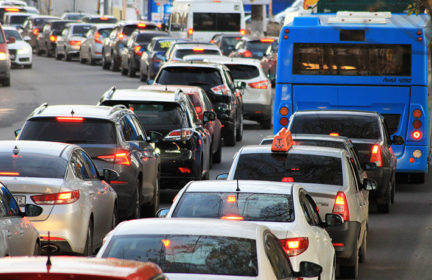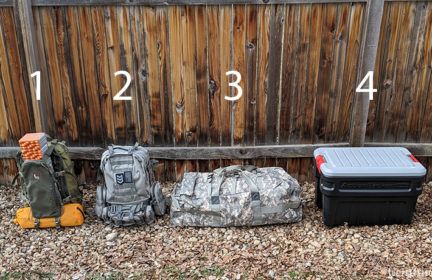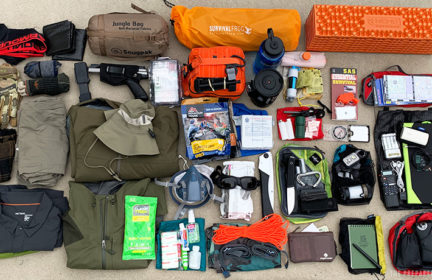Bugging IN or OUT your response times matter
Bug In or out , your response times matter.
Think about it, we nearly all have well sorted INCH, BOB or GHBs and plans on what to do it the balloon goes up, but have you considered your RESPONSE times in relation to Getting Out Of Town / Getting home/ Evacuating in the context of what everyone else is doing at the same time.
Lets consider a few examples of thev worst kind first before looking at more likely issues.
1 Cascadia / San Andreas. If you live close to the coast you could have as little as five minutes to react to a tsunami hitting places like Coastal Oregon / Washington and an average of roughly 12 to 25 minutes in So Cal. But remember the footage from Anchorage in the 60s when the same fault let rip, the first thing that went out was the bridges and roads as huge landslides blocked roads, bridges collapsed and in places roads split and rose or fell by 30 meters so you need to explore all options including such things as heading to the upper floors of tower blocks and Multi story Car Parks insead of joining the masses running away from the sea.
https://en.wikipedia.org/wiki/1964_Alaska_earthquake
2 Depending where you live if the Volcano on Gran Canaria erupted and that huge chunk of mountainside fell into the ocean you could have up to 3 hours to get out to safety in Northern Europe and FIVE hours on the East Coast of the US, but consider the blind panic as New York, Boston etc Galveston, New Orleans, Miami and the Keys etc all tried to get inland in five hours ?.
During H Andrew when the target area had DAYS of warning many left it late to move to safer ground inland, Gridlock ensued and one well documented Prepper families efforts were for nothing. They left 12 hours before the storm was due to hit in a fully prepped BOV with full tanks and extra jerry cans, But because of the huge volume of traffic they found themselves crawling along at 5 MPH for 14 hours and ran out of fuel in the middle of nowheresville Georgia. Imagine all of the lowlanders of SE England trying to head west and north in a blind panic with the news that the tsunami is only 3 hours away.
https://en.wikipedia.org/wiki/Hurricane_Andrew
3 Slipping down the scale of dramatic effect a bit if we had another perfect storm of the type that caused so much damage to the UK east coast in 1953 where nearly 3000 Brits and Dutch drowned often in their homes. Today sea levels are higher, population density is FAR higher today and only certain key coastal and riverine defences like the Thames barrier are fully maintained. Another storm like the 1953 storm if it broke through the defences could kill upwards of 50,000 people and deluge much of London and the area around the Thames estuary. Can you imagine 9.3 million Londoners trying to leave the area in a hurry and most would not try to get out until the barriers started to fail. Only ONE van leaking diesel in the Blackhall tunnel recently during rush hour caused traffic jams over 10 miles long and delays of up to 5 hours across a huge area, so a couple of minor crashes, people running out of fuel etc and hundreds of thousands will be stranded with no room for manoeuvre. Oh and in 1953 we still have a huge CIVIL DEFENCE program of equipment and staff to help rescue efforts ALL now long disbanded.
https://en.wikipedia.org/wiki/North_Sea_flood_of_1953
I wrote this BEFORE the Covid Outbreak of 2020.
4 So imagine a Spanish flu outbreal like the one in 1918 hitting London, crippling essential services https://en.wikipedia.org/wiki/1918_flu_pandemic or an EMP or Carrington event https://en.wikipedia.org/wiki/Solar_storm_of_1859 hitting the country and suddenly the power is gone, not only have your cities lost their electricity but their street lights, traffic lights, cell phones, land lines, refrigeration, tube trains, trams, water , gas and sewage supplies, check out tills and credit card readers, cash points, lifts, flood barriers power to houses and shops. Imagine the Carrington event happening in a bad winter?
5 The HUGE firestorms that raced across both California and Australia in the last few years, that in some cases the fires were reported to travel faster than a speeding vehicle..
6 Mass urban civil unrest and rioting looting and arson in the US in 2020, often the law enforcement agencies stood aside and did nothing. Think about people living OVER or NEXT to shops and businesses being looted. OR Imagine living along a route between shopping centres and business districts.
It could even be the arrival of MILLIONS of desperate migrants overwhelming the authorities and pouring into the country in huge numbers collapsing our entire social welfare infrastructure and looting, stealing and rioting. The EU has found itself totally unable to stop 2 million migrants from surging across Europe, And in the US Trumps wall looks likely to be abandoned because of a change in the administration.
Imagine any given scenario where you need to get home QUICK or bug out QUICK I am sure most if not all of us have our plans in place regardless of how minor, melodramatic or massive they are, but have you considered all the potential obstacles in your way from blocked roads, refugees, road blocks, strikers, terrorist activity, riots by migrants creating no go areas, collapsed bridges, traffic jams, YOUR vehicle breaking down AND the realisation that your allotted times for getting out of town turn out to be far shorter than you planned for. Consider Alternative routes, Consider alternative responses, Consider the suitability of your current kit to deal with varying situations and far shorter reaction times. Consider ensuring you have TV and Radios with the ability to switch to breaking news broadcasts if something happens.
Oh and never forget its the preppers who are best informed who can react quickly to take advantage of the various APPS and Tickers you can get for your PCs and Cell phones that instantly send breaking news to you as it happens.
PreWARNED is as good as being prePARED.
-
Comments (19)
-




